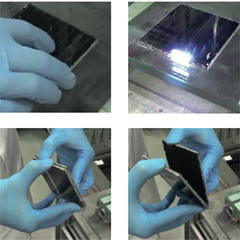Words: Dr. Wolfram Palitzsch, Loser Chemie GmbH
Loser Chemie is developing high quality, cutting edge recycling technology especially for the photovoltaic industry. The recycling of this waste is important from a political, economic and environmental perspective.
Loser Chemie GmbH (LC) was a chemical company whose main business was in water chemistry. Recently Mr. Loser restructured his company. He founded a holding company and sold the aluminium and barium chemistry sections. In order to build and run a photovoltaic recycling turnkey system he bought a plant engineering company – TESOMA GmbH.
Loser believes that you can only expect a first-class solution from a specialist. Thus Tesoma has established a reputation for providing precisely that, especially in the handling of flat glass. The company ranks as an international market leader when it comes to drying and fixing. Tesoma develops and manufactures their dryer systems in exclusive cooperation with JRT Photovoltaics. The highest precision and optimised processes allow mean minimal breakage when producing solar wafers. Partnering with qualified market leaders gives the competitive edge along with the maximum possible potential for photovoltaic modules. This venture has brought the Loser group in to the photovoltaic industry.
LC is aware that in the future natural resources such as water or metals maybe in short supply and therefore recycling is the most advisable end-of-life strategy and a way to save raw materials from being wasted now.
It is undisputed that unquestionable benefits come along with photovoltaic systems. The emission of greenhouse-gas from the manufacturing process is insignificant compared to the lifetime greenhouse-gas savings after installation and electricity production. This green electricity displaces our dirtiest energy sources. This is why the photovoltaic industry is undergoing remarkable growth. Global solar PV installations are soon expected to reach a cumulative capacity of 200 GW , which will see solar producing more energy than 30 coal or nuclear plants combined and will help save over 100 million tons of the greenhouse-gas, CO2, annually.



























